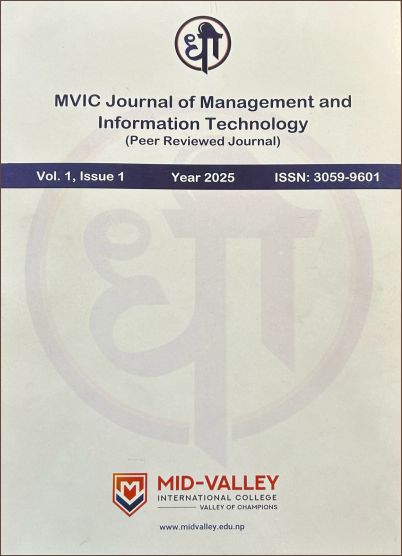Interoperability Service Delivery Architecture among Ministries of Nepal
DOI:
https://doi.org/10.3126/mvicjmit.v1i1.77312Keywords:
Interoperability, Service Delivery, Architecture, Framework and Data ExchangeAbstract
Interoperability service delivery architecture refers to a structured framework that enables seamless sharing, exchange, and integration of data and processes among diverse government entities, enhancing the efficiency and effectiveness of public services. Examining the interconnectivity of Information Systems in Nepal's ministries is vital for streamlined public service delivery. Interoperability challenges among Nepalese government ministries arise from historical independent computing systems, hindering effective service utilization. Trust issues, literacy constraints, and governance obstacles further impact service delivery enhancement efforts. This research aims to devise an Interoperability framework to enhance public service delivery across Nepalese ministries, with secondary goals encompassing comparative analysis, innovative strategies for ministry services, and the creation of a comprehensive interoperability framework. In this study, a mixed research design is utilized to create an interoperability framework for Nepal, involving in-depth interviews and surveys to comprehend the local-level framework, incorporating quantitative data and human perspectives for a holistic understanding. The study highlights the need for an integrated interoperability framework to address challenges in government ministry systems, including data exchange issues. A comprehensive approach encompassing technical, organizational, and contextual aspects is vital for effective collaboration, restoring trust, and enhancing service delivery. The research findings on interoperability system delivery architecture offer valuable implications. Government entities are suggested adopt the proposed framework for efficient data exchange and collaboration. Policymakers can shape regulations based on insights to promote interoperability standards. Additionally, the private sector and technology developers can align solutions with identified needs for an enhanced public service delivery landscape. Keywords: Interoperability, Service Delivery, Architecture, Framework and Data Exchange




